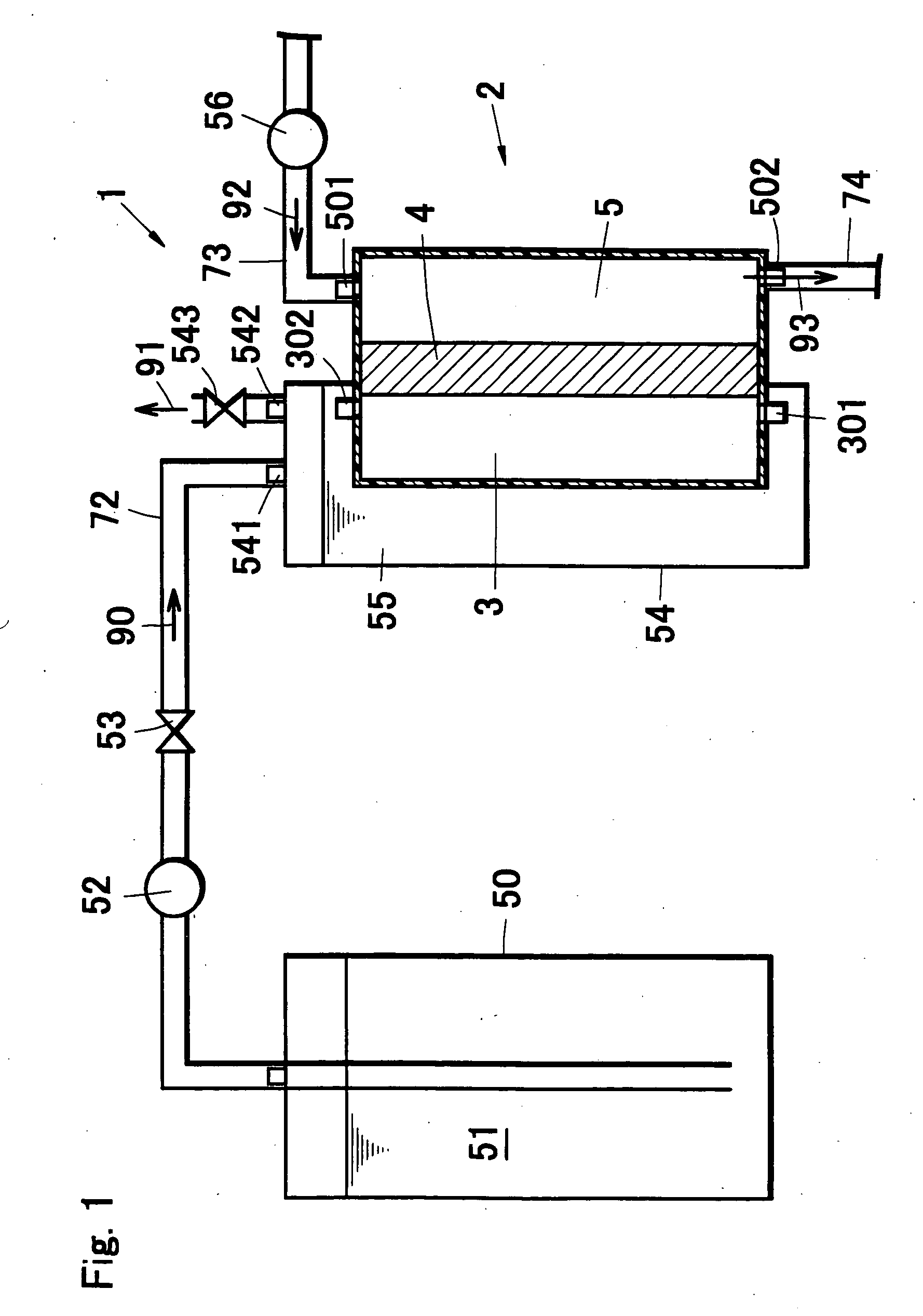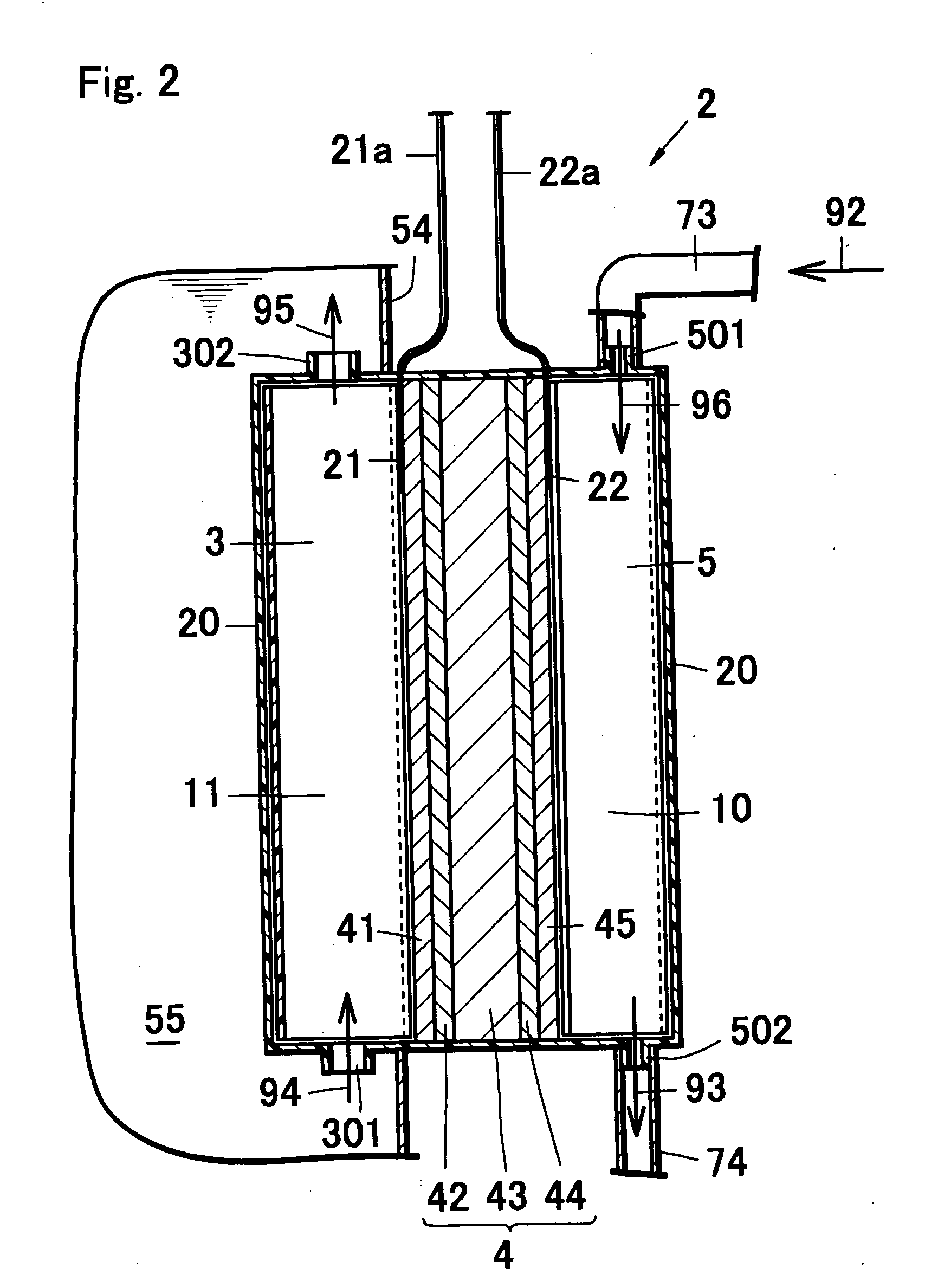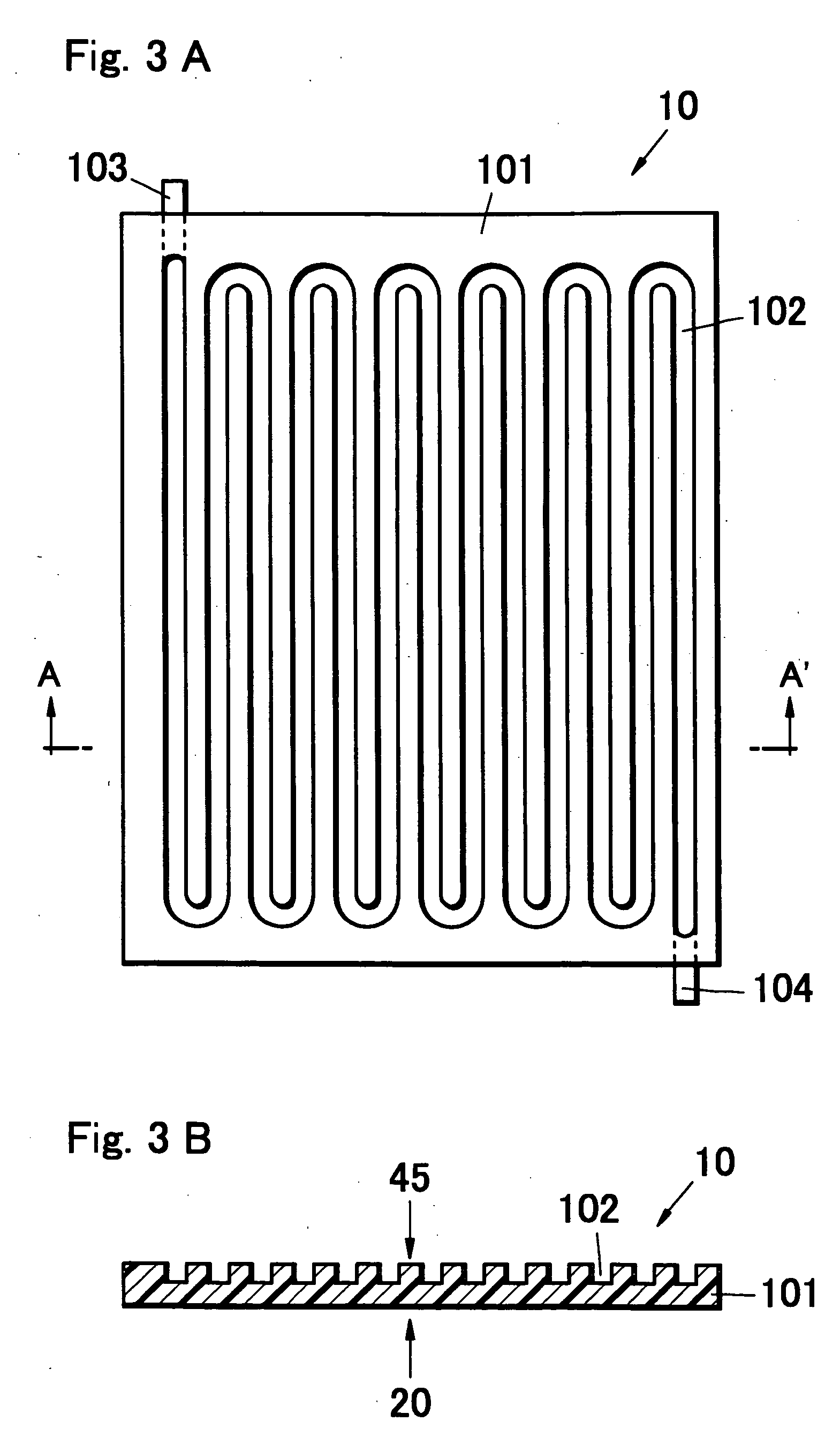Fuel cell
a fuel cell and separator technology, applied in the field of fuel cells, can solve the problems of difficult application of the fuel cell system to portable electronic equipment, inability to downsize, and prolong the residence time of the anode and the cathode, and achieve the effect of facilitating molding and reducing the weight of the separator
- Summary
- Abstract
- Description
- Claims
- Application Information
AI Technical Summary
Benefits of technology
Problems solved by technology
Method used
Image
Examples
first embodiment
[0136] (First Embodiment)
[0137]FIG. 1 is a schematic structural view showing a fuel cell system in the first embodiment of the present invention. FIG. 2 is a schematic structural view showing a fuel cell body for use in the fuel cell system of FIG. 1.
[0138] As shown in FIG. 1 and FIG. 2, a fuel cell system 1 has a fuel cell body 2 that is a power generation portion for generating electric power by electrochemically converting chemical energy of fuel to electric energy, and an auxiliary equipment system for operation such as feeding fuel or the like necessary for the power generation to the fuel cell body 2. Moreover, the fuel cell system 1 is a Direct Methanol Fuel Cell (DMFC) for generating electric power with use of a methanol solution exemplifying organic liquid fuel as fuel by directly extracting protons from the methanol.
[0139] As shown in FIG. 1, the fuel cell body 2 has an anode (fuel pole) 3, a cathode (air pole) 5 and a membrane electrode assembly 4. The membrane electrod...
second embodiment
[0163] (Second Embodiment)
[0164] Description is now given of a fuel cell system according to the second embodiment of the present invention. FIG. 7 is a schematic structural view showing the fuel cell system in the second embodiment of the present invention. A fuel cell system la in the present embodiment is almost identical in structure to the fuel cell system 1 in the first embodiment, and therefore description herein will be focused on difference therebetween.
[0165] The fuel cell system 1a in the second embodiment is a fuel cell system with use of a Direct Methanol Fuel Cell (DMFC) which generates electric power by directly extracting protons from methanol. The fuel cell body 2 shares the structure of the fuel cell system 1 in the first embodiment.
[0166] As shown in FIG. 7, the entire fuel cell body 12 is disposed so as to be completely immersed in an intermediate tank 54 that is auxiliary equipment for fuel feed.
[0167] Herein, FIGS. 8, 9A and 9B show the detailed structure of...
third embodiment
[0185] (Third Embodiment)
[0186] Description is now given of a fuel cell system according to the third embodiment of the present invention. FIG. 14 is a schematic block diagram showing the fuel cell system in the third embodiment of the present invention. A fuel cell system 1b in the third embodiment is almost identical in structure to the fuel cell system 1 in the first embodiment, and therefore description herein will be focused on difference therebetween.
[0187] The fuel cell system 1b in the third embodiment is a fuel cell system with use of a Direct Methanol Fuel Cell (DMFC) which generates electric power by directly extracting protons from methanol. A fuel cell body 212 shares the structure of the fuel cell system 1 in the first embodiment.
[0188] As shown in FIG. 14, the entire fuel cell body 212 is disposed inside an intermediate tank 254 that is auxiliary equipment for fuel feed in the state of being completely immersed in liquid fuel 55 contained in the intermediate tank 25...
PUM
| Property | Measurement | Unit |
|---|---|---|
| power | aaaaa | aaaaa |
| power | aaaaa | aaaaa |
| thickness | aaaaa | aaaaa |
Abstract
Description
Claims
Application Information
 Login to View More
Login to View More - R&D
- Intellectual Property
- Life Sciences
- Materials
- Tech Scout
- Unparalleled Data Quality
- Higher Quality Content
- 60% Fewer Hallucinations
Browse by: Latest US Patents, China's latest patents, Technical Efficacy Thesaurus, Application Domain, Technology Topic, Popular Technical Reports.
© 2025 PatSnap. All rights reserved.Legal|Privacy policy|Modern Slavery Act Transparency Statement|Sitemap|About US| Contact US: help@patsnap.com



